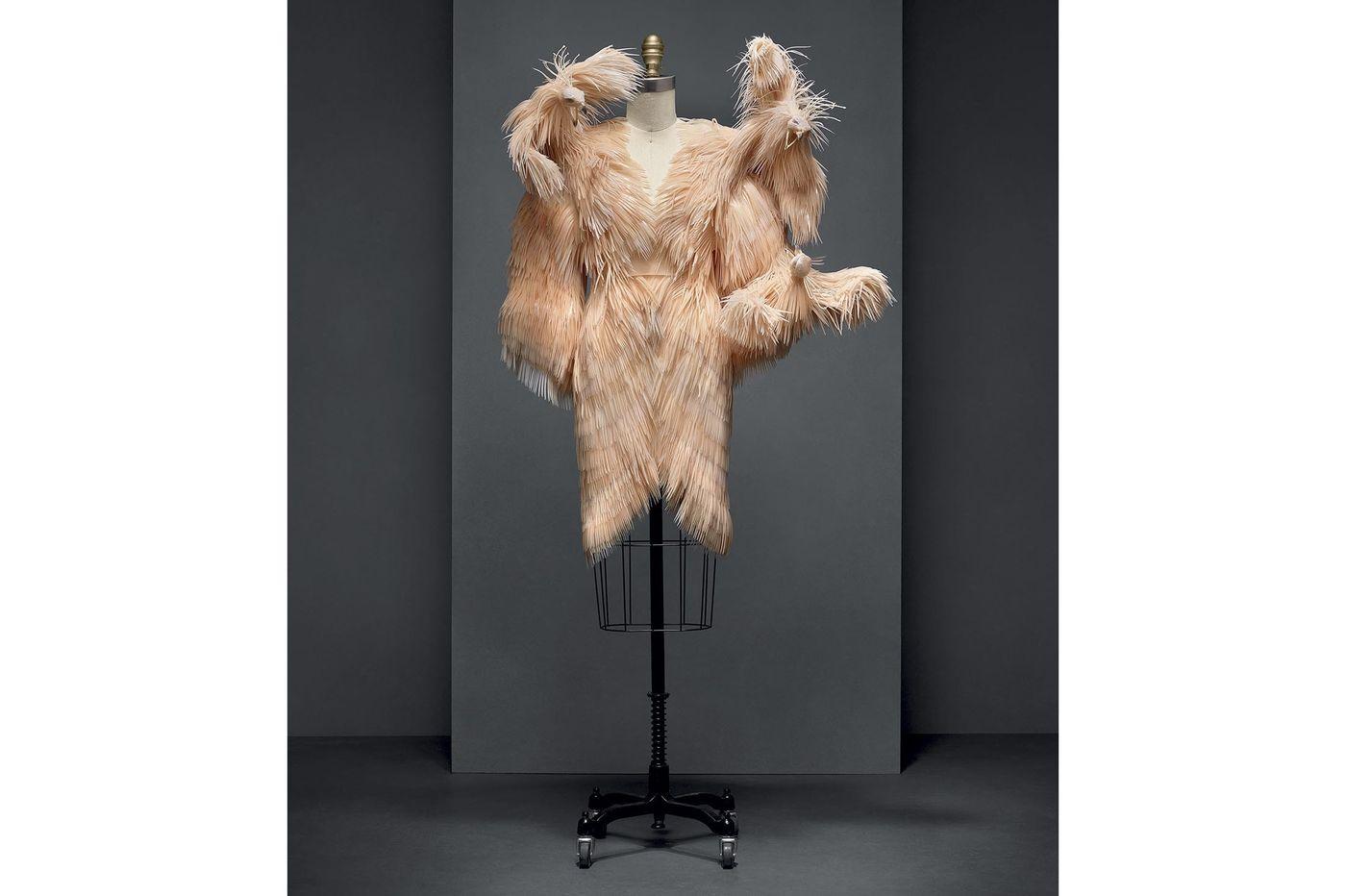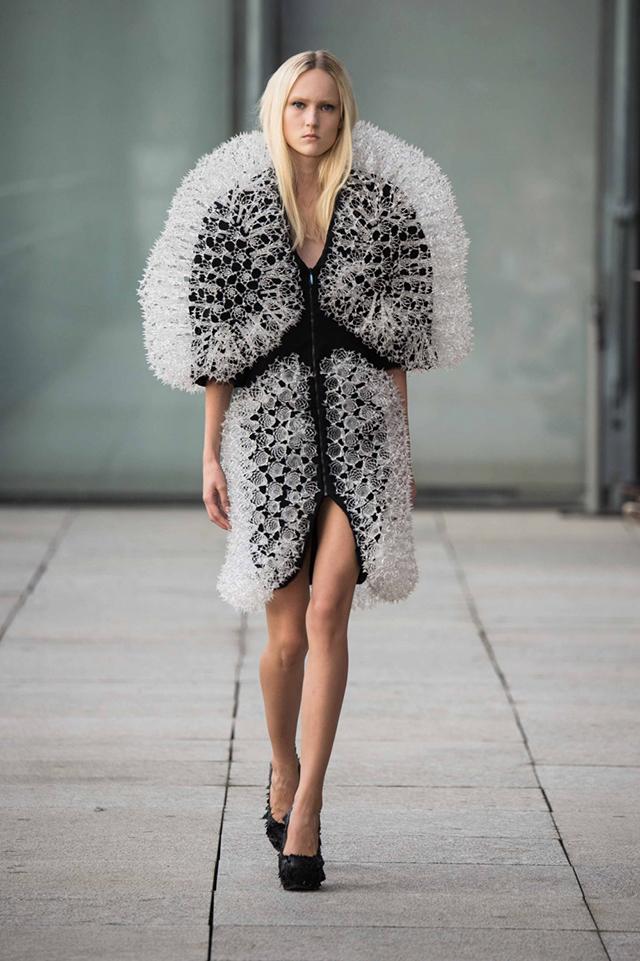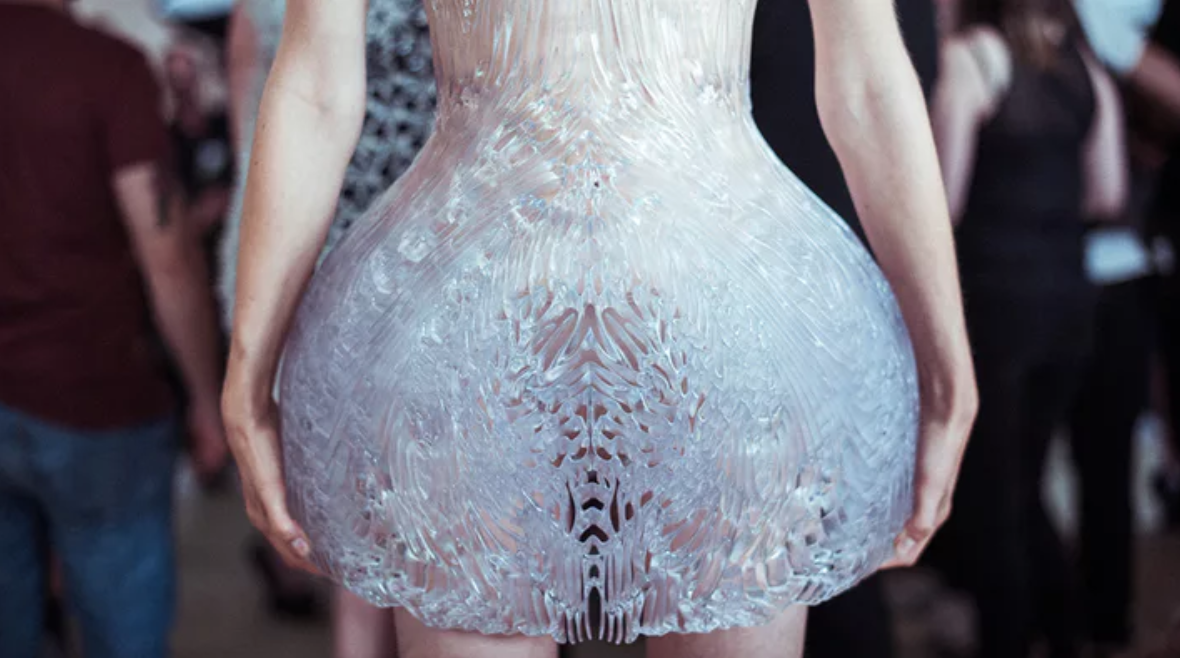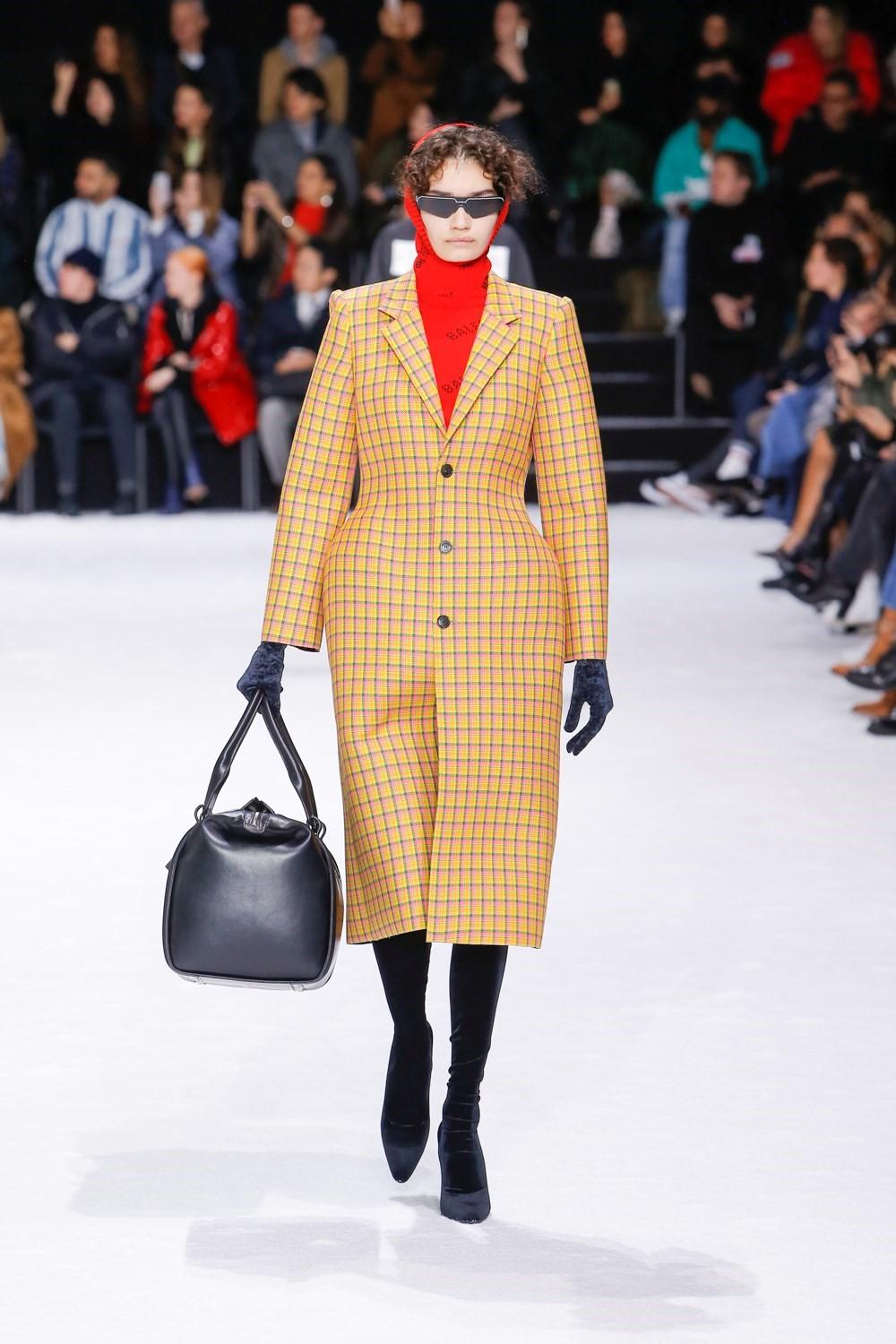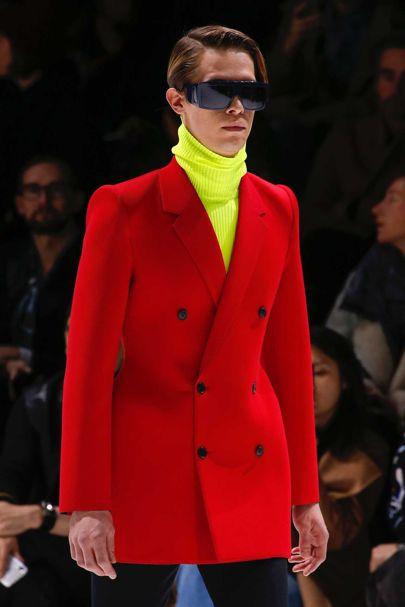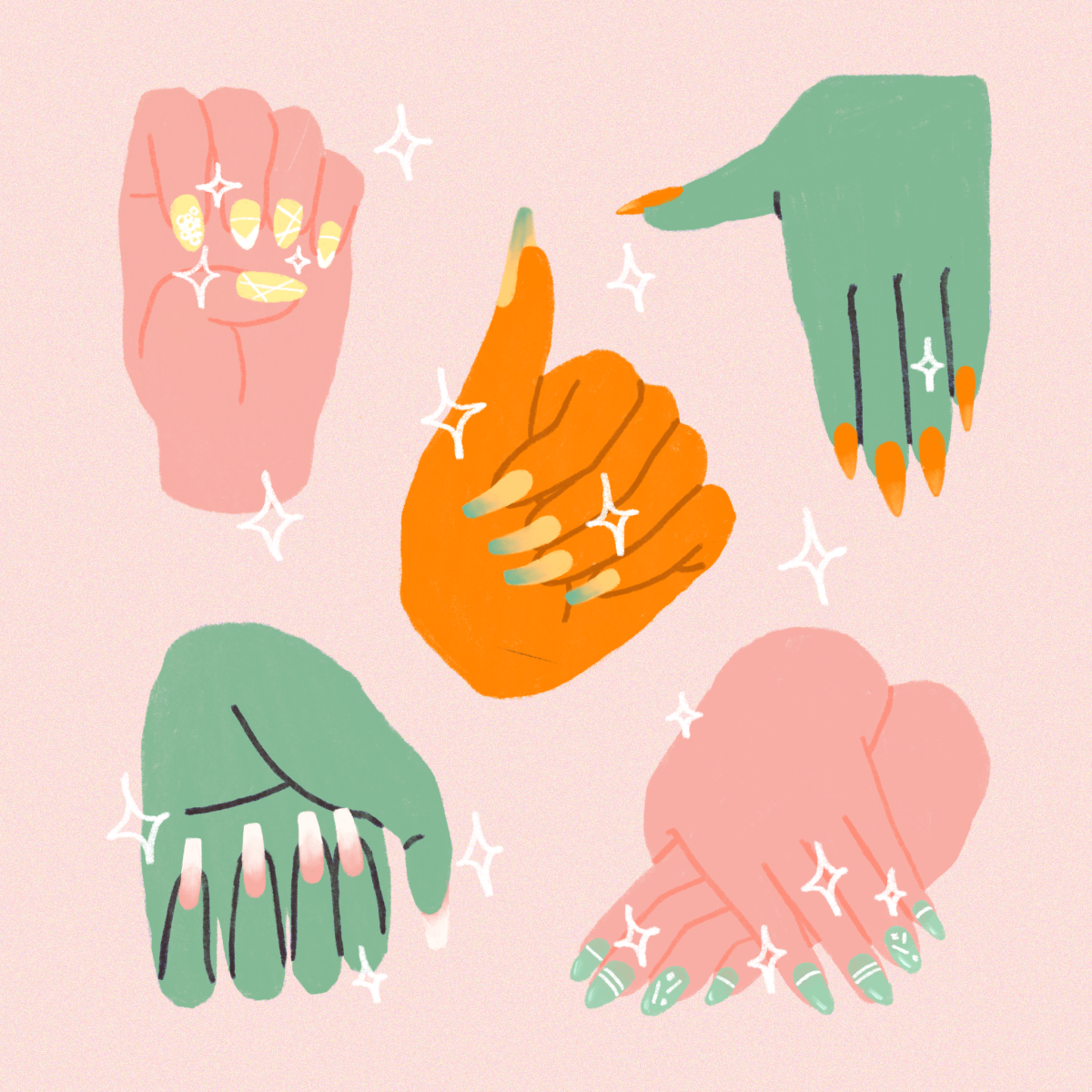3D printing rests at the intersection of fashion and technology. It combines digital, physical and biological elements to create a product all its own. Just as doctors and scientists have made significant strides in 3D printing organs, and chefs have crafted 3D printed food, many designers are incorporating 3D printing into their repertoires. 3D printing enhances accessibility in fashion and improves the ability to customize clothing.
Story by Kennedy Williams
Photo courtesy of Bloomberg
How it works
Possessing a machine that digitally creates clothing seems like something out of Disney’s “Smart House.” But 3D printing brings the far-fetched dream of kids growing up in the early 2000s to life. While 3D printing a garment isn’t exactly magic, it entails a process that is full of mystery. While many people believe that text printed onto paper seeps into the paper and stains it, the text is actually resting on top of the paper. 3D printing magnifies this idea.
To start, a design must be made in a 3D file. 3D models of the desired object are then sliced into thin, horizontal layers and printed out layer by layer, creating a realistic 3D effect. Choosing the right material is key, as different filaments work best for different things.
Depending on the item, 3D printed clothing can be made from a variety of filaments, including nylon and plastic. Most clothing is 3D printed through stereolithography, which creates fragility. Overall, 3D printing is most successful with hard materials and geometric shapes.
3D printing at the University of Texas at Austin
While 3D printing may seem out of reach, schools and studios are becoming sites for exploring the technology. Dahlia López, a mechanical engineering student at UT Austin, 3D prints her own earrings. She began to make her own jewelry while in middle school.
Lopez describes making earrings as both an anxiety reliever and a process that allows her to use the school’s unique resources. “There’s definitely a lot of resources at the school of engineering, especially the [MakerStudios] where there are free tools and 3D printers,” Lopez says.
3D printing also helps solve accessibility problems. “Sometimes I’ll want a certain accessory that’s out there in the world, but it’s either too expensive or too hard to obtain. It’s a lot easier for me to just make it on my own,” Lopez says. “It’s cool because I have autonomy on what I want to wear and I get to make the earrings all my own without spending a lot of money.”
What’s promising about 3D printing
3D printing disrupts the notion that fashion is distinct from technology and science. Rather, fashion is intertwined with several disciplines. 3D printing literally connects garments to technology, as much of the design process is done via a computer.
Photos courtesy of Senatus and The Business of Fashion
There are notoriously long lead times in fashion between initial sketches and shipping garments to stores. 3D printing, despite being a lengthy process, can actually expedite the design process. In a Vogue interview, designer Iris Van Herpen speaks about the first garments she 3D printed. “I remember the first piece I printed took seven days, 24 hours a day, to print. If you count that in hours, it’s massive, but it doesn’t take that long anymore. It’s pretty fast.”
3D printing also helps designers create samples. Rapid-prototyping would allow the design process to be expedited, allowing designers to release more product.
Time aside, 3D printing presents exciting opportunities on the design front. In January, Adidas began selling its first partially 3D printed shoe, the Futurecraft 4D. In a partnership with Carbon, a Silicon Valley-based company, that pioneered Continuous Liquid Interface Production, Adidas produced its first shoe with a 3D printed sole. This partnership is not only significant technology-wise — it also presents promising abilities to mass produce 3D printed items.
Designers for luxury brands are also taking advantage of 3D printing. Demna Gvasalia, creative director of Balenciaga, 3D printed jackets for the brand’s fall-winter 2018 collection. After taking 3D scans of models and tailoring the scans with computer-aided designs, Gvsalia and his team molded the jackets with a lightweight foam. Fabrics such as tweeds and velvet were layered over the foam to create the final look.
Photos courtesy of Vogue Magazine
In an interview with i-D, Gvasalia says, “For me, it represents what I love about tailoring and what Balenciaga stands for in terms of architectural garments. We started quite artisanally, then worked with 3D scanning body moulding specialists — we worked with people who aren’t used to working in fashion. I hope it’s the beginning of a long collaboration.” Gvsalia’s work postures 3D printing as a technology that will help the high fashion world evolve and stay current.
































